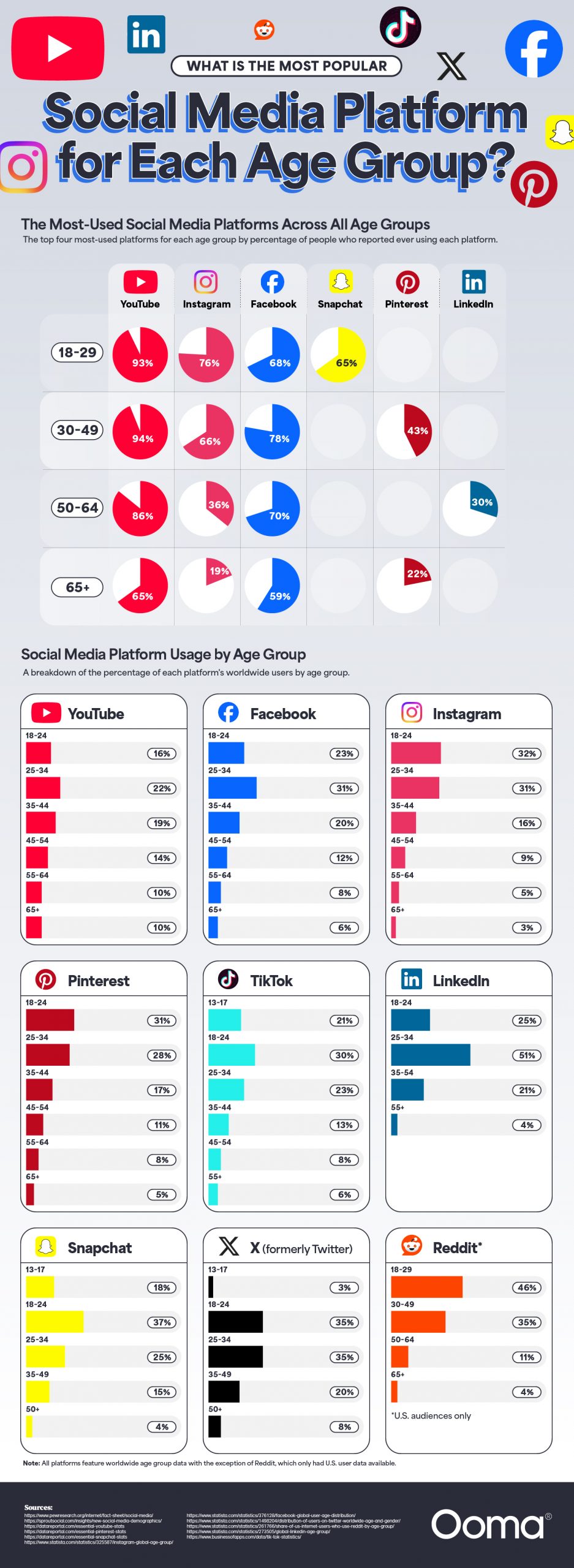Misc Visuals
How Prom Dress Styles Have Evolved Over Time
When you think of prom the first image that may pop into your head is a sea of colorful and extravagant dresses dancing the night away. The style of dresses you’re picturing, though, will depend entirely on the decade that you attended prom. Fashion trends are always evolving and that proves especially true when it comes to prom dress styles, as seen in this visual from popular fashion brand Lulus.
Click below to zoom
It starts with the early 1900s Victorian Era and travels through current day trends on a fashion blast through the past of the most popular prom dress styles from every decade. Here you’ll find the free and fun flapper dresses of the 1920s to the long and flowing bohemian dresses of the 1970s. As you go through the timeline of dresses it’s interesting to note how popular movies or celebrities had an impact on a decade’s fashion trends. The popularity of “Gone With the Wild” in the 1940s brought back the Victorian-Era style dresses that had been popular forty years prior. Pop stars like Britney Spears and Christina Aguilera influenced the prom dress styles that were popular in the 2000s. As the dress styles change from decade to decade, one thing about prom remains the same and that is the desire to get decked out in fancy attire and dance the night away with friends and classmates. And to see who is crowned Prom King and Prom Queen, of course! What type of prom dress do you think will emerge as one of the most popular styles of the 2020s?
Charts
Study Reveals How Age Shapes Social Media Preferences
Social media platforms connect billions of people worldwide every day, but these platforms aren’t uniform. They’re diverse micro-societies reflecting different age groups at different rates. Ooma’s new infographic analyzes social media usage patterns to deliver insights about generational preferences and a picture of the digital landscape’s influence on information spread.
The Ooma team used data from the Pew Research Center’s Social Media Fact Sheet and other reputable sources of social media demographics. Their approach gives us domestic and global information on platform usage numbers, which is valuable for researchers, marketers, and the digitally curious.
Click below to zoom.
A stand-out finding is YouTube’s enormous popularity across all American age groups. The platform brags 93% usage among 18–29-year-olds, 94% among 30–49-year-olds, 86% among 50–64-year-olds, and 65% among those 65 and older. YouTube is so widely used that it’s the second-largest search platform after Google. Anyone who wants quick video results can turn to YouTube to ask questions, but more than that, it’s a source of entertainment and education, too. With something for everyone, it’s no wonder YouTube is universally popular.
Facebook offered us some surprising data. It’s usually considered a platform for older generations, but the data defies this stereotype and shows us a platform with cross-generational appeal. 68% of people between 18 and 29 reported Facebook usage, and 78% between ages 30 and 49 did too. These numbers among younger people are nothing to sneeze at. Facebook has over 3 billion users worldwide, with a user base that clearly encompasses more than baby boomers and Generation X. Facebook’s staying power is impressive given the rise of up-and-coming apps like TikTok and Snapchat.
While YouTube and Facebook enjoy universal appeal, the infographic does reveal some age-based patterns for certain platforms. TikTok is certainly popular among younger users, with 59% of people aged 18 to 29 reporting that they use it, and only 10% of users over 65. TikTok’s user base tends to be young worldwide, with 30% of its users aged 18 to 24, and 21% between 13 and 17.
LinkedIn skews much older with usage peaking among 50- to 64-year-olds. This is no surprise as LinkedIn is primarily a professional platform made for business connections rather than entertainment or social sharing.
The data also reflects major shake-ups in a social media company that affect user bases. X, formerly known as Twitter, lost 2.7 million active users in just two months in December of 2024 after actions taken by CEO Elon Musk. The platform seems most geared toward people between 18 and 34, who comprise 34% of the user base.
These patterns show how age groups can affect social media usage and suggest what aspects of a platform attract different groups. The findings underscore how important it is for platforms of all kinds to adapt to changing culture and demographic needs or risk being left behind as exciting new platforms rise to take their place.
Business Visualizations
30 Statistics That Show the Alarming Reality of Data Breaches
Ooma’s new infographic shows that data breaches are a huge concern and much more common than we would like to think. Their new graphic offers 30 statistic-based facts that show us the harsh reality. Companies have limited time to react to data breaches before they hit the news cycle, and software developers have to stay on their toes to prevent security threats. Data breaches hand over customer contact details, proprietary software, and employee information to bad actors, so taking these threats seriously is of the utmost importance.
Click below to zoom.
Record High Levels of Financial Damage
The financial stakes of data breaches have never been higher. The data shows that in 2024, the average global cost of a data breach reached an all-time high of $4.88 million, a 10% increase. On average, American organizations bear the highest costs, at $9.36 million per breach. The U.S. healthcare industry is hit the hardest, with average data breach costs around $9.77 million.
Mega breaches incur the highest costs and the most damage. A mega breach involves over a million records and costs an enormous $375 million to rectify. The largest data breach was the Change Healthcare attack in February 2024, which exposed 190 million medical records and caused over $2 billion in damages. This was the largest medical data breach in American history.
Human Error Leads to Cyberattacks
55% of all data breaches are malicious attacks, with the remaining attacks split between human error and system failures. This shows that nearly half of breaches are due to internal vulnerabilities instead of being caused by the power of a sophisticated external attack. Out of all applications, Microsoft Office suffers 69.1% of cyberattacks, which means that everyday office tools can become a major target, taking advantage of employee vulnerability.
When someone inside an organization leads the attack, the expenses are highest, averaging $4.99 million. Ransomware is still a big danger, with the costs of attacks increasing by 500% between 2023 and 2024 and the average recovery cost around $2.73 million.
Delays in Detection and Containment
The amount of time it takes for organizations to detect a data breach is a bit shocking. It takes an average of 204 days to discover the breach and then another 73 days to contain it. That’s a nearly 10-month data exposure window. Most distressing is the fact that personal data breaches take the longest to detect and contain – an average of 292 days.
Recovery and Data Breach Prevention
The aftermath of a data breach remains a big challenge. Only 12% of businesses report making a full financial recovery after the breach. 70% of breached organizations have significant disruptions to business, and only 1% describe the breach as low-impact. Healthcare businesses have the longest-lasting effects with major damage to their reputation. They need to spend 79% more on marketing for the two years following a data breach. Strategic investments in cybersecurity offer stronger protection, and using AI in security operations can save around $2.2 million. Overall, this graphic emphasizes the importance of investing in strong cybersecurity.
Charts
A Hidden Health Crisis: Where Children Drink the Most Soda
A new study from the PA Requirements team unveiled regional patterns in children’s soda consumption across the U.S. Some states have consumption rates up to five times higher than others, revealing some truly alarming statistics. The map is based on the CDC’s Youth Risk Behavior Survey, which included 42 states in a week-long analysis of soda drinking behavior. The end result is a map that paints a concerning picture of soda consumption among American children.
Click below to zoom.
West Virginia is at the top of the list, with 22.5% of high schoolers there reporting that they drank soda twice or more every day. That’s one in four West Virginia teens having several sodas every single day. Kentucky is close behind, with 18.5% of teens drinking multiple sodas, followed by Mississippi at 17.1%. These numbers seem especially high compared to the state with the lowest consumption, Massachusetts. Only 4.9% of teenagers there reported drinking multiple sodas a day.
The survey asked students to report their soda consumption with one of three answers each day: didn’t drink any soda, drank one soda, or drank two or more sodas. Responses show that children in Southern states drank the most soda.
Unfortunately, the results show us more than beverage preferences. There are a lot of health implications we can glean from these results. One soda contains 7 to 10 teaspoons of sugar, comprised of high-fructose corn syrup. For small children, the impacts of consuming so much processed sugar are even more pronounced. High sugar consumption is linked to obesity, dental disease, sleep disruption, and type 2 diabetes.
Children are also more prone to developing a sugar addiction. Drinking too much sugar leads children to develop a sugar addiction and symptoms of excessive sugar consumption, which include weight gain, mood swings, and trouble focusing.
The map colors show us a “sugar belt” across the Southern United States, with seven of the top highest consuming states located in the South. Research has shown that education impacts nutritional choices as well as income levels. Some of the states on the high end of the spectrum have lower public school ratings and high poverty levels, so it seems this isn’t coincidental. Culture may play a part as well. With many soda companies originating in the South, it might be that Southerners enjoy soda more and have normalized having a soda with meals.
Understanding soda consumption rates and health risks can help parents and educators make informed decisions about health choices for children. We don’t always realize how much soda we’re consuming until we look at hard data like this. This map and research underscore the need for soda-drinking interventions, especially in certain regions. While soda is a good treat, it’s not intended to be drunk daily, especially not for children. Through studies like this, awareness, and education, we can improve the health of American children.
-

 Business Visualizations11 months ago
Business Visualizations11 months agoEverything Owned by Apple
-

 Business Visualizations10 months ago
Business Visualizations10 months agoAmerica’s Most Valuable Companies Ranked by Profit per Employee
-
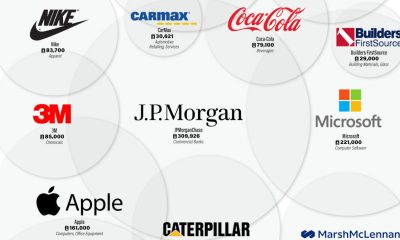
 Business Visualizations3 months ago
Business Visualizations3 months agoThe Biggest Employers by Industry
-
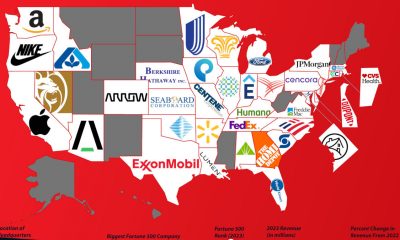
 Business Visualizations6 months ago
Business Visualizations6 months agoThe Biggest Fortune 500 Company in Every State
-
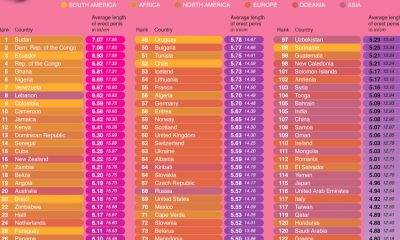
 Maps2 years ago
Maps2 years agoPenis Lengths Around the World
-
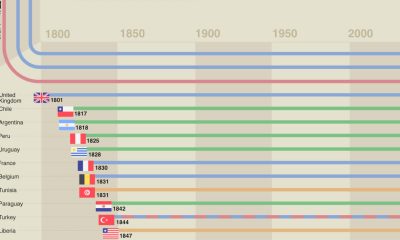
 Timelines2 years ago
Timelines2 years agoA History of the Oldest Flags in the World
-
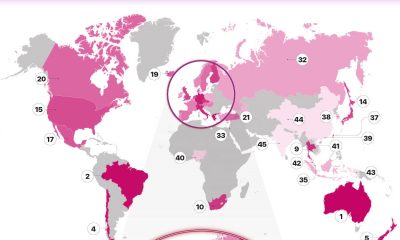
 Charts2 years ago
Charts2 years agoThe Most Promiscuous Countries in the World
-

 Business Visualizations2 years ago
Business Visualizations2 years agoHow Many Companies Does Elon Musk Own?


